CHANGE IS COMING
Looking at the Progressive Era in Books
Introduction | Background Knowledge | Activities | Extensions | Standards
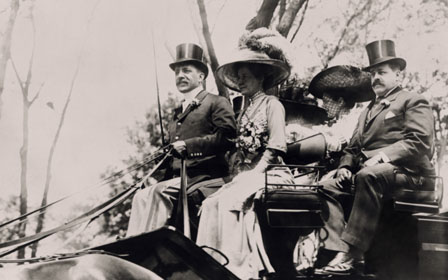
Introduction
Progress means to move forward or onward. In the era after Reconstruction, the United States began to move forward and onward.The goal was a better society, and many social and political reforms made progress toward the goal. The tale of two Americas also characterizes this era. A small concentration of wealthy citizens continued to accumulate wealth while the challenges of being poor in America were exposed. Many tourists can visit the opulent homes built during the Gilded Age. Many workers in present-day America enjoy working conditions that were shaped by labor reforms of the Progressive Era. These reforms, in addition to the growth and expansion of businesses, shaped America until the Stock Market Collapse of 1929 and the beginning of the Great Depression.
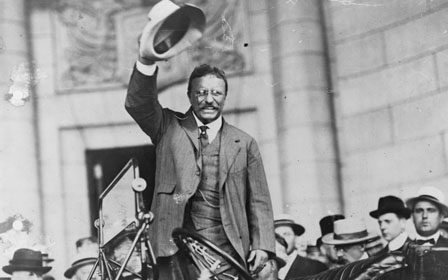
Background Knowledge
As Reconstruction drew to an end in the South, the North and West began an age of rapid growth. Known as the Gilded Age, wealthy Americans became wealthier while poor Americans got poorer than they were. Corruption ran rampant as corporations grew. Immigration numbers swelled as people flocked to the United States, many through Ellis Island in New York City. This age of growth and prosperity ran from 1870-1900 and sparked the Progressive Era, which was from 1890-1929.
The Progressive Era was an answer to the excess and inequity of the Gilded Age. Many progressives, known as "muckrakers", sought to expose those inequities. Names of the rich - John Jacob Astor, George Vanderbilt, Andrew Carnegie - are as well known as those who worked against the wealth of the time - Jane Addams, Frances Perkins, Jacob Riis. Presidents Theodore Roosevelt, William Howard Taft, and Woodrow Wilson led the country during this time, with Roosevelt being a champion of the labor movement.
Four major amendments came out of the Progressive Era. The 16th Amendment, passed in 1909, allowed Congress to levy taxes on income. This tax helped fund many of the reforms. In 1912, the 17th Amendment allowed for the direct election of Senators.The short-lived 18th Amendment, also known as Prohibition, was ratified in 1919 and later repealed with the ratification of the 21st Amendment of 1933, the manufacturing, transportation, and sale of alcohol was prohibited. A major amendment - the 19th Amendment - was passed in 1919 and ratified in 1920 and granted women the right to vote. These amendments highlight the focus on social reform in America during the Progressive Era.
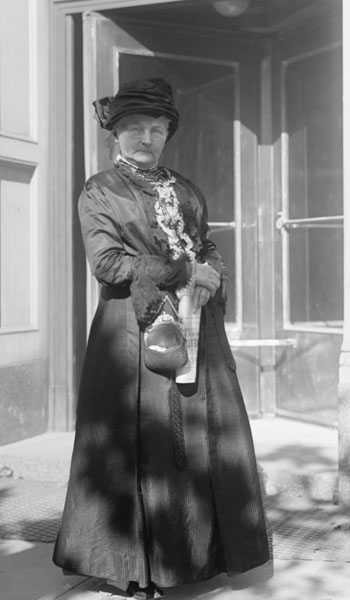
ACTIVITIES
Selective List of Picture Books
- Jacob Riis's Camera by Alexis O'Neill (ISBN 9781629798660)
- Jacob Riis was a photojournalist in New York City during the Progressive Era. He used his camera to bring awareness to the plight of tenement houses and the children who lived there. His photographs helped bring reform to the conditions in tenement houses.
- Visit the author's website to see a Q&A with Alexis O'Neill as well as a book talk from the author.
-
The Museum of the City of New York offers lesson plans for grades 2-12. These plans have excellent primary source analysis activities as well as project-based application activities
- The Museum of the City of New York also houses a digital collection of Riis's work.
- Learn more about tenement life from the Tenement Museum, being sure to visit their digital exhibits.
-
Encourage your students to look at their school through a lens.
- Technology Approach - Use iPads or digital cameras and walk around the school taking pictures. Use primary source analysis questions (examples of pages 4 and 5 of this lesson plan) to analyze the pictures.
- Non-technology Approach - Make toilet paper binoculars or give students one toilet paper or paper towel tube. Walk around the school and look through the binoculars or the tube. Have them sketch what they see. When you return to the room, have them take one sketch and draw a full picture. Use the primary source analysis questions to discuss what they saw through their smaller lens.
-
The Only Woman in the Photo by Kathleen Krull (ISBN 9781481491518)
- Frances Perkins served as the first Secretary of Labor under President Franklin D. Roosevelt. She worked her way to that position during the Progressive Era, helping to protect workers across the country.
- While this discussion guide is for a different title, the discussion questions and resources are applicable for The Only Woman in the Photo. This guide also includes a Readers' Theater script.
- In 1911, Frances Perkins led an investigation into the Triangle Shirtwaist Factory fire. The investigation led to a list of demands that she would eventually give to FDR. Ask students what they would change about conditions at school and why.
- The New York Times has higher-level activities that can be adapted for younger students.
-
Mother Jones and Her Army of Mill Children by Jonah Winter (ISBN 9780449812914)
- To protest labor conditions for children, Mother Jones led a march from Philadelphia to President Theodore Roosevelt's summer home on Long Island, NY.
- Play Trouble at the Mill online game.
- Read about unions on Duckster. There is also a 10 question quiz at the bottom of the article.
-
Dangerous Jane by Suzanne Slade (ISBN 9781682632062)
- Jane Addams dedicated her life to helping others and created the social settlement house known as Hull House.
- Take a virtual tour of the Hull-House.
- Engage students with theater games curated by the Hull House Museum.
-
Make zines (or homemade publications) about public health in the Progressive Era.
- Technology Approach - Create digital magazines with Marq (formerly LucidPress) (TeachersFirst review)
- Non-technology Approach - Follow the directions from Brightly on how to make a zine.
Virtual Field Trips
- Ellis Island
- Warm Springs - FDR's Home
- Sagamore Hill - Theodore Roosevelt's Home (lesson plan included)
Videos to Watch
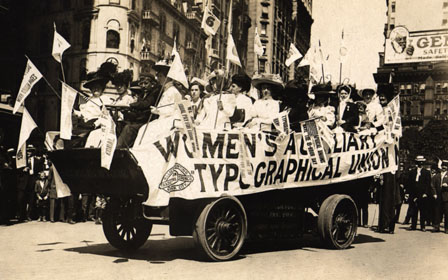
EXTENSIONS
-
Take Action in Your School or Community
- The Progressive Era was characterized by social reform. Encourage students to make a difference in the school or community. Work in small groups to identify a concern in the school or community that the students would like to address. After identifying the concern, they can work toward action through letter-writing, discussions with decision-makers, or organizing students to continue the conversation.
-
Around the World in 72 Days
- Learn more about journalist Nellie Bly and her 72-day journey around the world.
- Use actual maps or Google Maps (TeachersFirst review) to follow her journey.
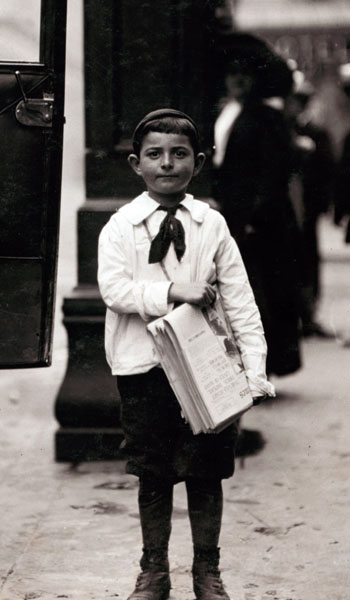
CORRELATION TO STANDARDS
-
AASL National School Library Standards
- Inquire Shared Foundation, Think Domain - Learners display curiosity and initiative by: 1. Formulating questions about a personal interest or a curricular topic. 2. Recalling prior and background knowledge as context for new meaning
- Inquire Shared Foundation, Grow Domain - Learners participate in an ongoing inquiry-based process by: 1. Continually seeking knowledge
- Include Shared Foundation, Create Domain - Learners adjust their awareness of the global learning community by:. 2. Evaluating a variety of perspectives during learning activities
- Include Shared Foundation, Grow Domain - Learners demonstrate empathy and equity in knowledge building within the global learning community by: 2. Demonstrating interest in other perspectives during learning activities
- Curate Shared Foundation, Create Domain - Learners gather information appropriate to the task by: 2. Collecting information representing diverse perspective
- Explore Shared Foundation, Think Domain - Learners develop and satisfy personal curiosity by: 1. Reading widely and deeply in multiple formats and write and create for a variety of purposes. 2. Reflecting and questioning assumptions and possible misconceptions.
- Explore Shared Foundation, Share Domain - Learners engage with the learning community by: 1. Expressing curiosity about a topic of personal interest or curricular relevance
-
ISTE Standards for Students
- Knowledge Constructor - 3d. Students build knowledge by actively exploring real-world issues and problems, developing ideas and theories and pursuing answers and solutions.
